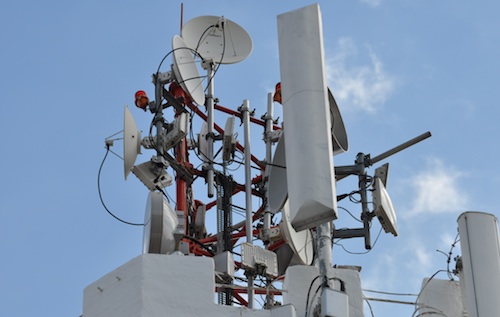
Get ready to hear a lot of hype about the 900MHz radio frequency spectrum band in the months ahead as competition in broadband services between SA’s mobile operators heats up.
In a surprise development on Tuesday evening, MTN SA announced that, in addition to its plans to offer “uncapped” mobile data products, it was piloting a third-generation (3G) cellular network at 900MHz.
MTN didn’t provide much detail about its plans, but the news came just months after Cell C announced it would use some of its 900MHz spectrum to provide 3G broadband services.
Most operators worldwide have deployed 3G in the 2,1GHz band. That’s also the case in SA — it’s the spectrum band MTN and Vodacom have both used to build their 3G networks.
And Telkom Mobile, which is expected to launch later this year, will also use 2,1GHz.
But some operators say “refarming” 900MHz spectrum makes sense if they’re to provide more affordable broadband. Radio wavelengths in the 900MHz band are longer than in 2,1GHz and so can more easily penetrate buildings and travel longer distances. That means fewer base stations have to be built, especially in rural areas — an important cost consideration.
Cell C was the first SA operator to talk up 900MHz 3G when its CEO, Lars Reichelt, announced in December 2009 that that the company was planning to move some of its 2G voice customers from 900MHz to 1,8GHz, where, like MTN and Vodacom, it also has a chunk of spectrum which it uses for 2G services.
Cell C is doing this to free up the 900MHz band to begin offering 3G broadband using evolved high-speed packet access, or HSPA+ technology. The operator is investing about R5bn in 2010 in network infrastructure, including a new 3G network. It has contracted ZTE and Nokia Siemens Networks to build the network.

Like MTN and Vodacom, Cell C has two 11MHz chunks of spectrum at 900MHz. Most of Cell C’s 900MHz spectrum is in the so-called GSM “extended band” — not all phones initially supported this band, though that handicap is no longer much of an issue.
But refarming the spectrum, which has traditionally been used for GSM, or 2G, telephony is not easy to do.
According to Reichelt, SA is “one of the first markets in the world” to refarm 900MHz. He also says it’s an “incredibly complicated” process that requires top radio frequency engineers to get right.
And there’s not much experience the country’s operators can draw in — MTN says SA is only the fifteenth country in the world to begin refarming 900MHz for 3G.
Funnily enough, MTN already has some early experience in refarming spectrum — its Ghanaian operation is doing it. Network equipment manufacturer Ericsson recently claimed it would be the first in Africa to deploy a 3G cellphone network in the 900MHz band on behalf of MTN Ghana.
The allure of 900MHz 3G is clear: the GSM Association, an industry body, says freeing up spectrum in the 900MHz band to provide 3G could give hundreds of millions of people around the world access to broadband for the first time.
Until now, faster 3G networks have typically operated at 2,1GHz, whereas 2G networks operate at 900MHz and 1,8GHz. The lower frequency means operators don’t have to build as many base stations. It also means the signal can penetrate deeper into buildings, ensuring a better wireless broadband experience for users.
The GSM Association says 3G deployed at 900MHz provides a 44% to 119% improvement in coverage in urban and rural areas respectively when compared to the same technology operating at 2,1GHz.
In Ghana, MTN’s 900MHz 3G network, which is under construction, will coexist with 2G services. Ericsson has assisted MTN Ghana with “spectrum optimisation” to free up the 3,8MHz it says is required to provide 3G at 900MHz.
But refarming 900MHz is not without its challenges. Some industry experts say operators are taking a big risk if they refarm 2G capacity now as relatively few cellphones and modems support 900MHz 3G.
Not everyone agrees, though. Cell C’s Reichelt insists there are “already tons of devices out there” that support 900MHz 3G.
But detractors say that, at a minimum, operators will have to use almost 5MHz of their allocations in 900MHz for a single 3G carrier. “That’s a lot of 2G capacity then disappearing,” says one senior industry source. — Duncan McLeod, TechCentral
- Subscribe to our free daily newsletter
- Follow us on Twitter or on Facebook




